Hello, beloved parents and educators! We are thrilled to present our fourth workshop reflection and a review of the educational STEAM subscription in our “Around the World with Alice & Womple” project. We extend our gratitude to the local Cultural Center Barka or KC Barka for generously providing us with the venue for our program. Womple Studios graciously donated their educational boxes and offered their support to our program. In this article, we will delve into the objectives of our program and talk about the activities from the fourth workshop. Let’s dive right into it!

About the Womple STEAM educational box
Womple is an extraordinary educational box that takes children on a global journey to explore diverse countries and cultures. Each box contains materials for two country-themed crafts, which encompass a range of activities from art to engineering and building. What we particularly appreciate are the inclusion of stickers, informative posters, and a chapter book that narrates Womple’s adventures across various countries. The crafts come with detailed instruction posters, providing us with an opportunity to practice English by following and deciphering instructions.
There’s something magical about storytelling, isn’t there? Compelling stories transport us to new and exciting places—diving into underwater caves, venturing through dense and humid jungles, scaling the summits of perilous volcanoes. Stories also help children grasp complex subjects and understand different perspectives by immersing them in fresh experiences and allowing them to step into others’ shoes. They shed light on new concepts, broaden children’s horizons, and foster empathy.
Following each country, we are accompanied by Womple, our remarkable CTO (Chief Travel Officer). Womple is our beloved plush companion present in every workshop, guiding us through the remarkable cultures, countries, and languages we encounter.

Coddiwomple (v.) — To travel in a purposeful manner towards an unknown destination.
Our fourth Womple box – Brazil
Our fourth box was probably one of my favorite ones, it’s so fun, and the crafts were very hands-on and required tons of fine motor skills, which our group generally lacks. As always, we got a map, stickers, a chapter book, a postcard, 2x full craft materials, and craft instruction posters. I especially loved the snake because I have a couple of picture books for the storytelling program where I have snakes, so I will get many uses out of the snake as a prop in the future programs. :)
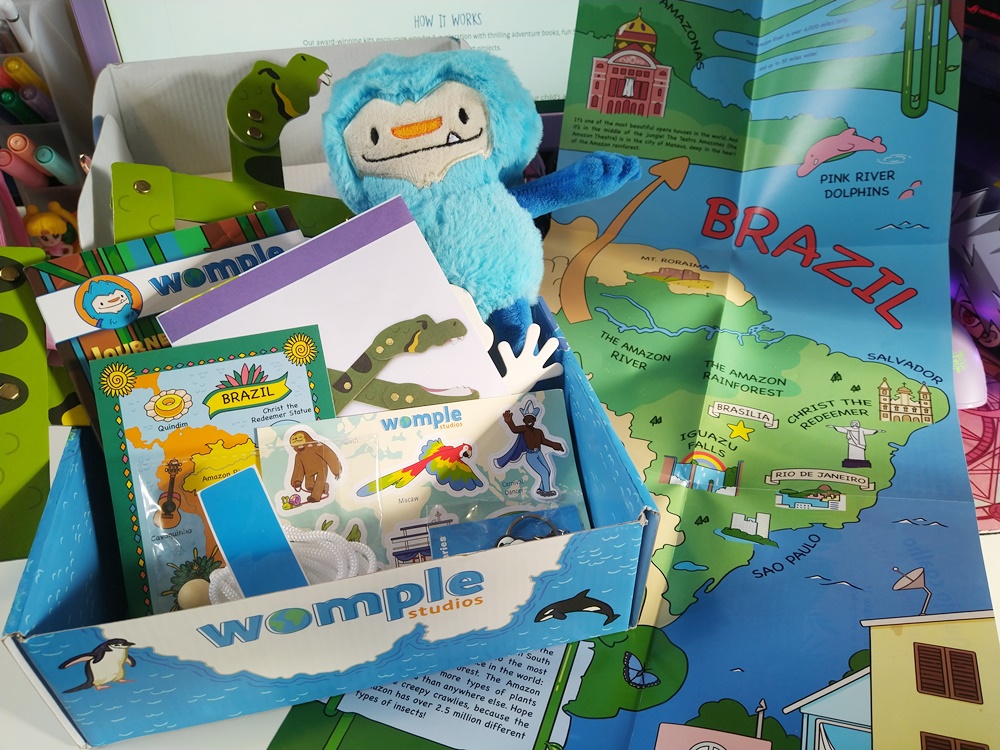
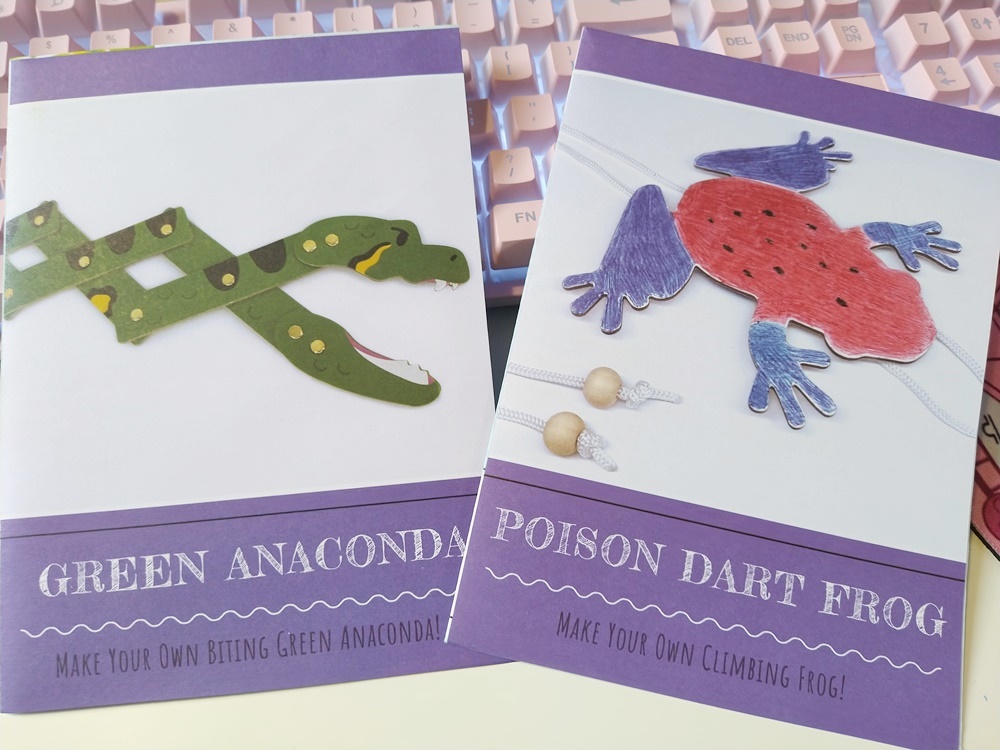
Workshop methods and program aims – in case this is the first Womple box article you are reading (we add the same methods to each post)
The program focuses on learning English through literature, travel & science. Each workshop has a dedicated book from a country we visit, where we follow our main character Womple on his travels. The science focus is present through exploring different phenomena from different countries (from the animal to the human world) and engineering (building various structures from cardboard and wood.)
The overall aims of the program include the following:
- Vocabulary acquisition through play,
- Developing awareness about other countries and cultures,
- STEAM – using science, technology, engineering, art, and mathematics (primary school level),
- 21st-century skills – communication, collaboration, creativity, critical thinking,
- Dramatic activities – gross motor skills (body movements) and gesticulation (facial expressions),
- Crafting – workshops with the book theme and fine motor skills development (using fingers).
The program has around ten children, and the spaces are limited. The present children need to be able to write and read the Latin alphabet. To participate in the program, the children need to have completed at least one year of language learning in school since the program is not for absolute beginners. The program is open to children from the 2nd, 3rd, 4th, and 5th grades. The group is permanently formed, and the same children attend from the beginning to the end of the program.
The grand opening
Today we were moved to a huge room which allowed us some space to run and to move more freely, which the kids really enjoyed.
Before the grand opening, we listened to some Portuguese music, and the kids were very fast to realize what’s the language, compared to the previous workshops. They really enjoyed listening to music in Portuguese and started recognizing different languages from the Roman group of languages. This time while they were listening to the song, we also discussed which countries speak Portuguese, and the conversation tiptoed around why and how Portuguese traveled from Europe to South America.
Before using the Brazil map from the subscription box, we used our sound map to explore all of the countries where we know people speak Portuguese. The children really enjoyed using the sound map and this time, and they needed no assistance from you whatsoever.
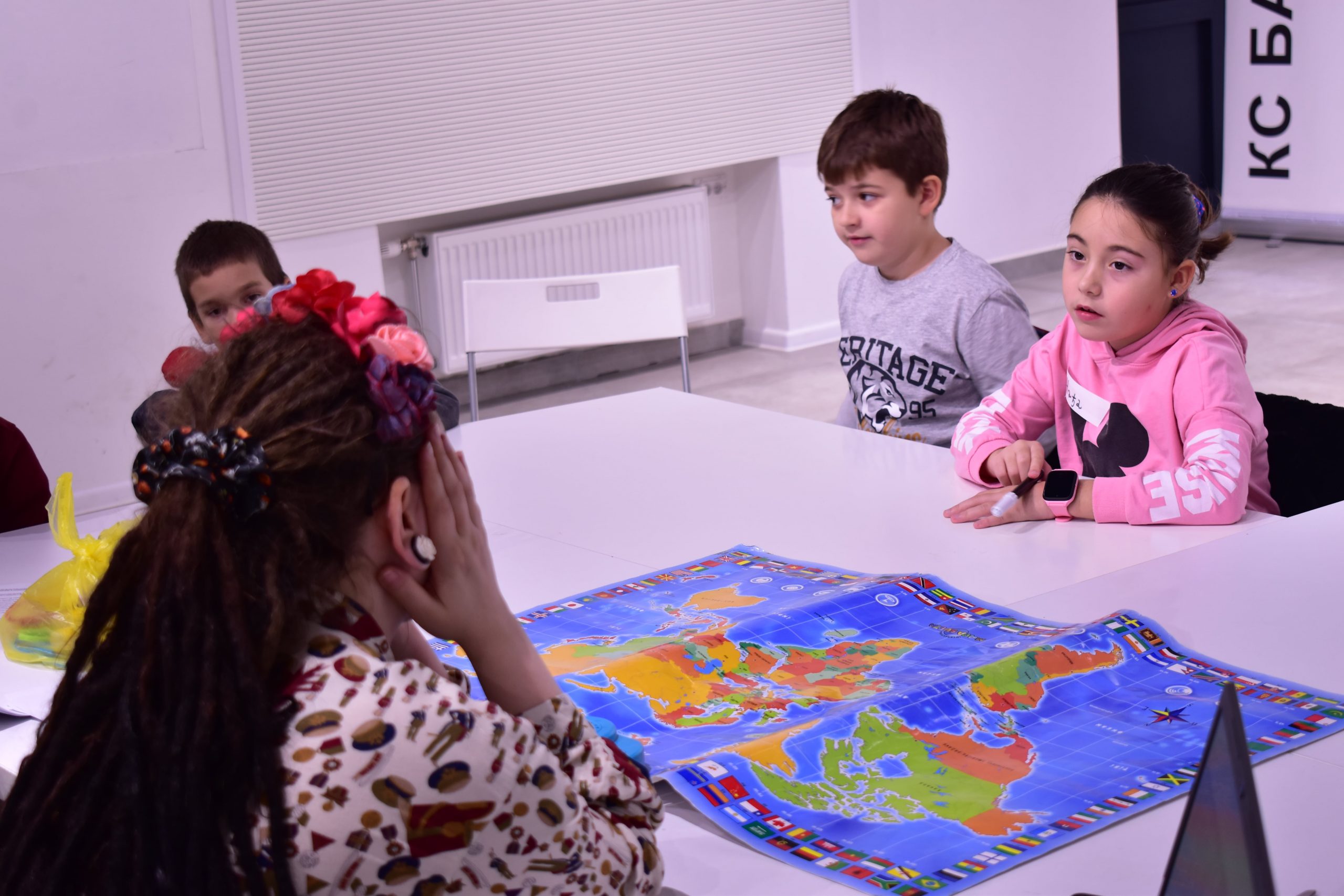
The big questions and map exploration
The big questions today revolved around searching for all of the countries where people speak Portuguese and also exploring the difference between Portuguese people speak in Portugal, and Portuguese people speak in Brazil by comparing the differences with the dialects we have in our own country.
We are still using a lot of Serbian while we are working, but we also managed to review many words we learned in English, and we practiced pronouncing the more difficult mixed sounds, such as soft CH. We also instructed parents to ask the children to show them and pronounce the sound at home.
We learned a lot about Brazilian food and its carnivals, animals, where is the River Amazon in Brazil located, and what is the capital city of Brazil. One of the students was excited, and he told us that their aunt would take them to Brazil this summer, and there were very excited to tell us about their itinerary. We hope to get some pictures and learn more about their travels when they return from Brazil because we want to compare what they learned while visiting with what we learned in the classroom.

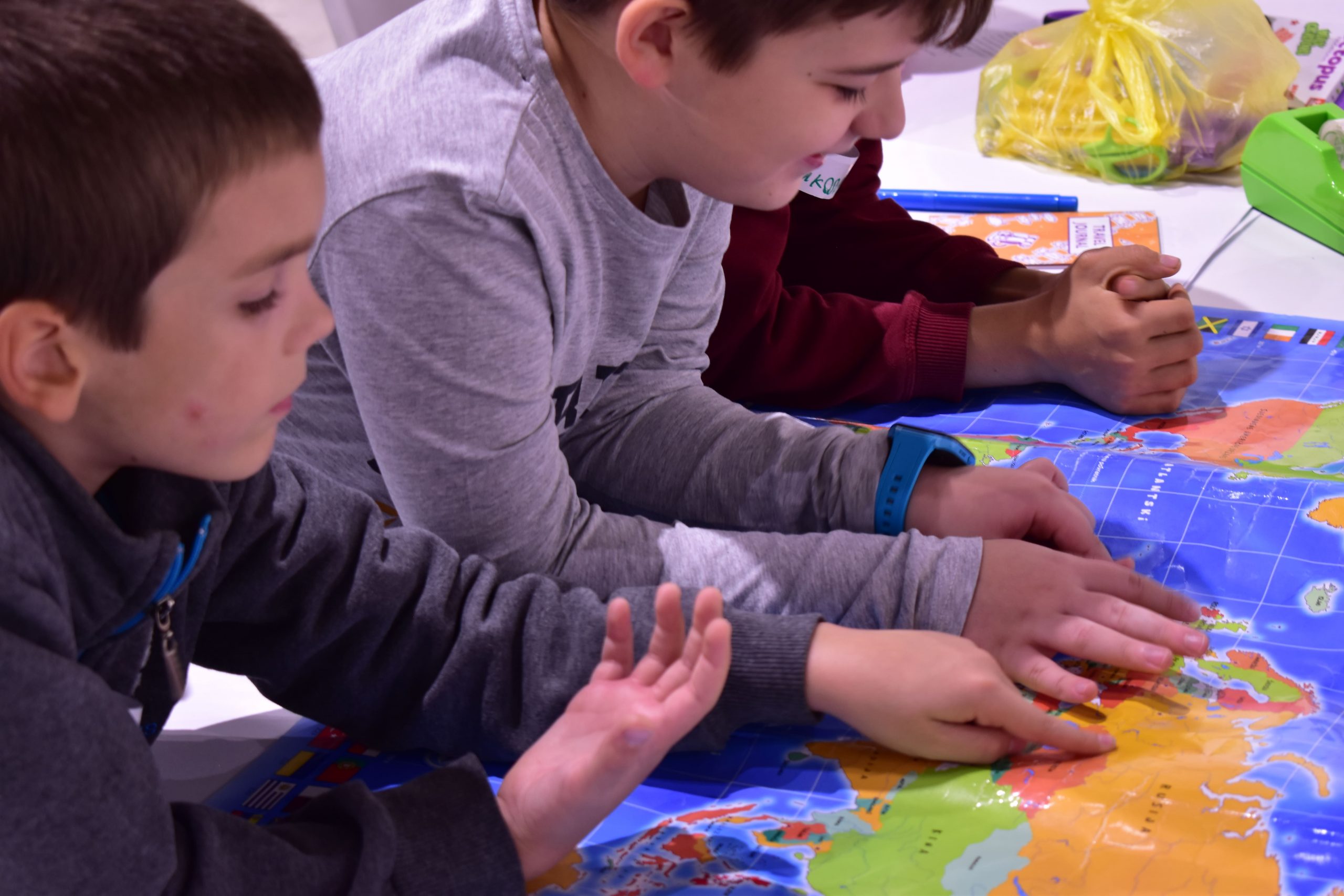
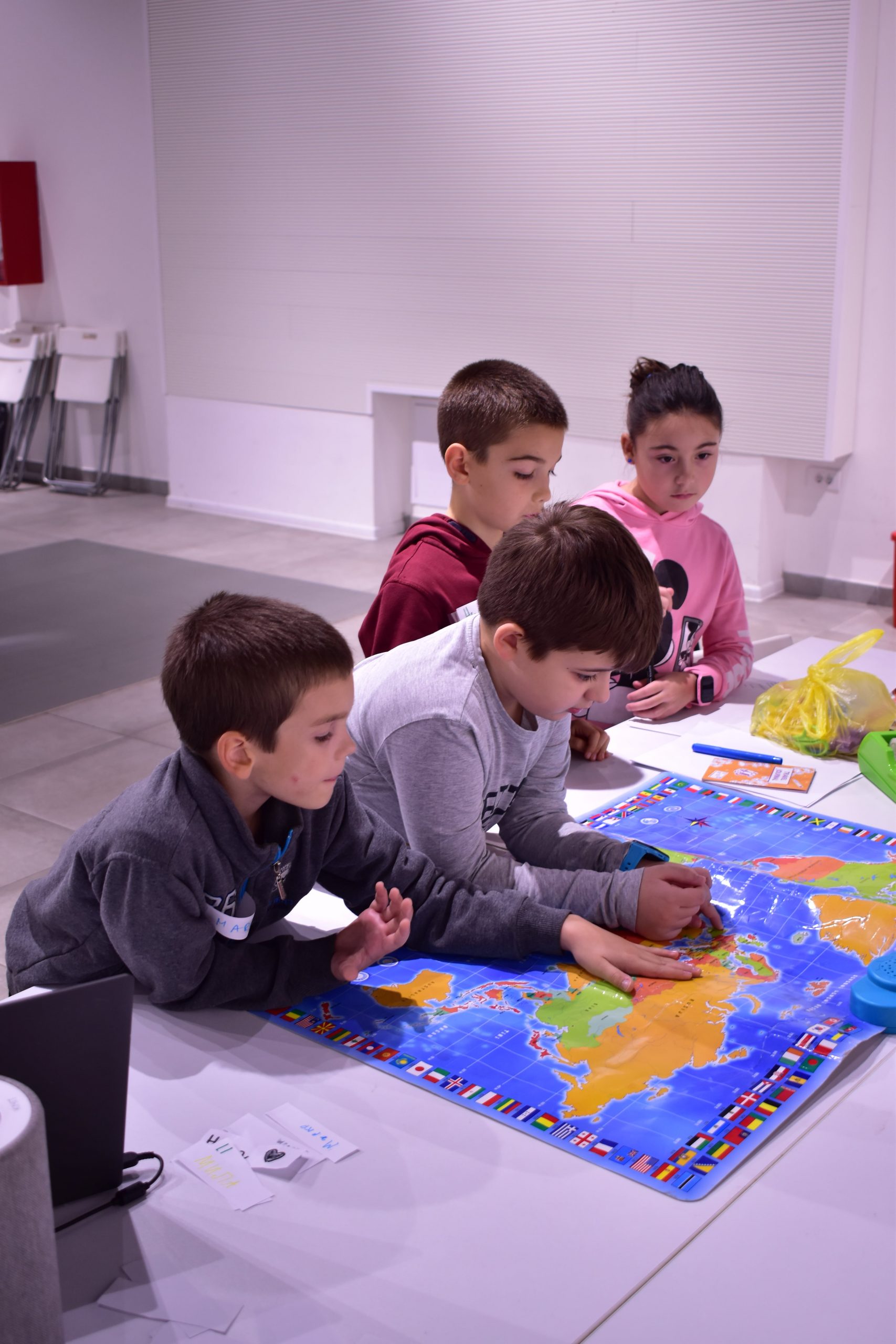
Exploring Womple’s story
As before, children were really excited to explore Womple’s chapter book. Today today, Marko was in charge of exploring the chapter book. He had a severe rash on his hand. A mosquito bit him, and he was allergic, and despite that, he still wanted to learn, play, and read, even though his hand hurt severely and he had to wear a bandage. I was amazed to see his motivation, and it made me happy because even with a swollen hand, he still wanted to flip the pages, ask questions, read what he could, and then come back to tell everybody what he had learned.
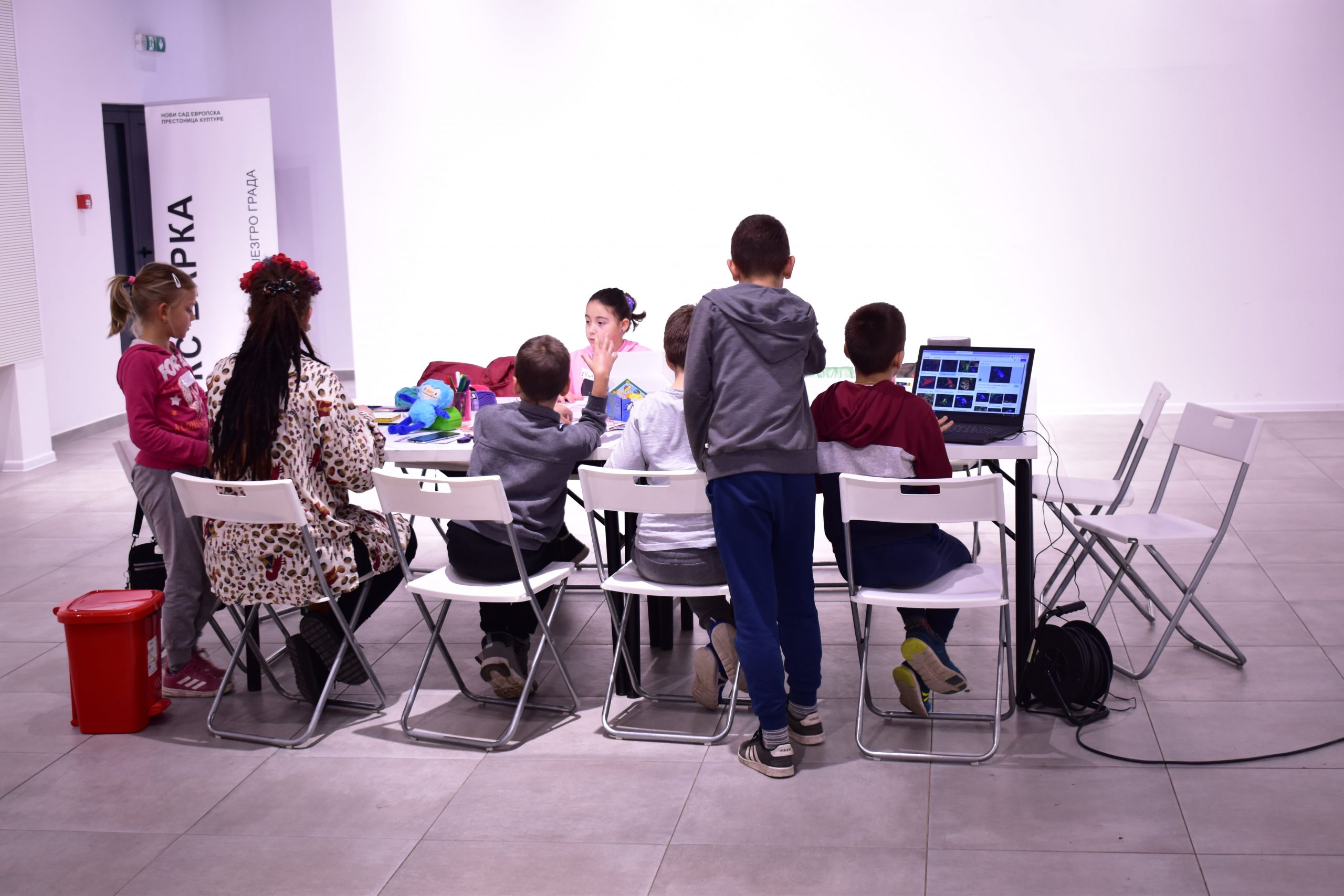
1st crafting activity
Today the first craft was a poisonous jumping frog. Everybody we’re interested, and they couldn’t wait to make their own frog. After they finished making their frog, they named them – the names were funny and very creative. They were so eager to test it out, and everybody lined up at the door, patiently waiting to test out their jumping frog.
Everybody’s frogs were different, and to get inspired, they searched online to see what actual frogs from the Amazon looked like. The instructions for the frog in the Womple box were amazing! We had a child interpret them, and then he shared the information he learned with the other present children.
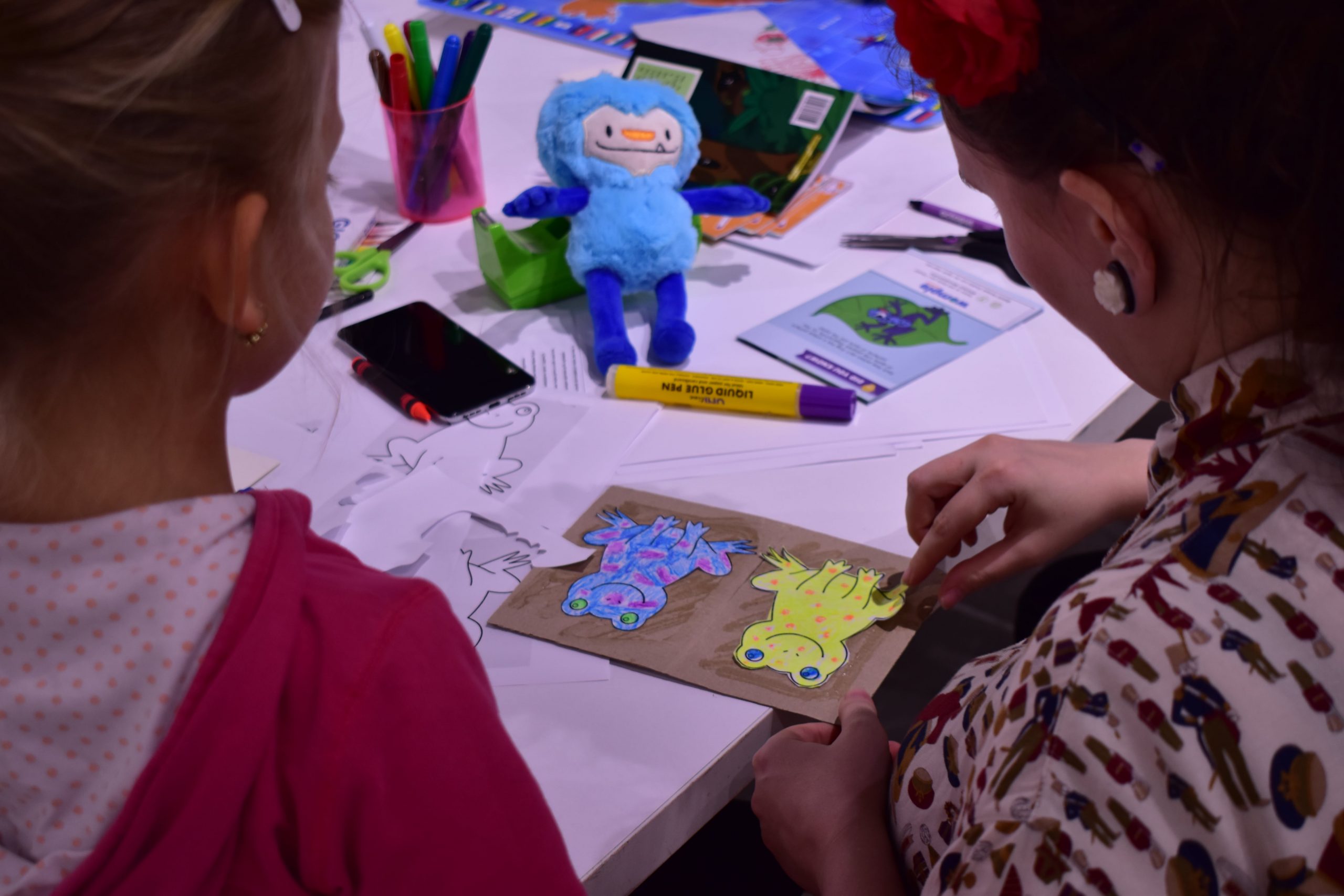

On the other hand, we had many difficulties with all of the children because the activity demanded fine motor skills. Cutting and gluing was also a big problem, and creating one frog lasted almost 20 minutes, so we asked the parents to practice their fine motor skills by giving them a task to cut and glue and home. I had to help everybody individually with cutting the frog and then pulling the string through the straw, so they got a bit bored while waiting for me to help them. Some of the children who finished first decided to help their friends, which is our first self-initiated example of collaboration among the children. I was especially thrilled to see that because that meant that we were finally connecting as a group and that they were finally feeling motivated to help others without me having to instruct them.
We reminded the parents to ask the children to show them their creations at home.

2nd crafting activity
The second activity was given to the child who unboxed the box, and he was really focused on it. He struggled to connect it, so a few kids came to help until they eventually made it together. I was working with the other kids and made it sound like I could not help because my goal was for them to work together without me. The anaconda craft was honestly brilliant, and it moved very quickly.
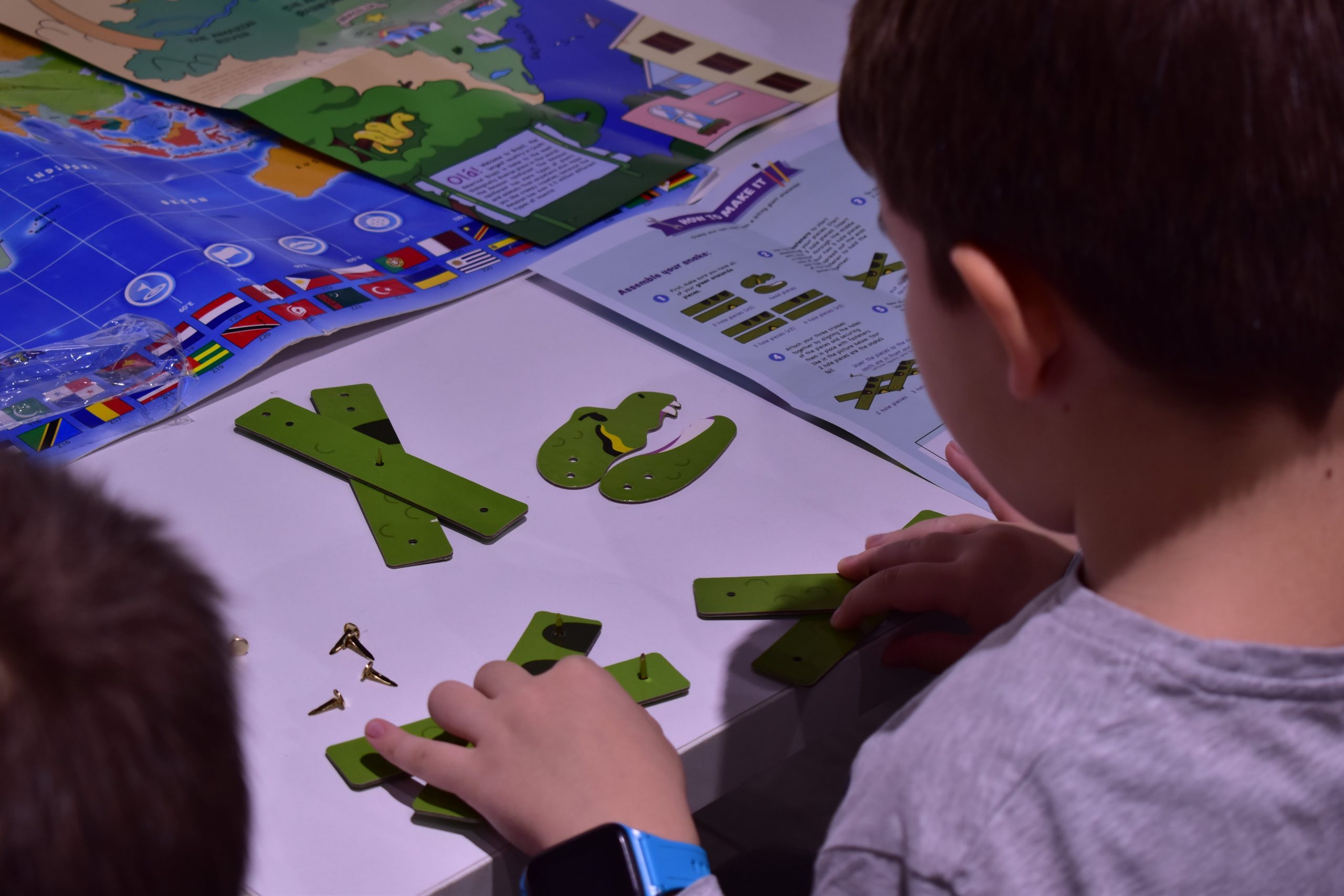
Some problems and learning opportunities
Lastly, we had two situations where someone said that carnival costumes were “horrible.” Another child said they were “obsessed” with carnivals, so we used those situations to talk about how we should talk when describing other cultures (even when we don’t like it). We deeply discussed how other people might find some of our customs weird and how we would feel if someone used those words to describe our culture.
We learned some vocabulary to express polite disagreement and dislike while ensuring we were not using harsh words that could hurt someone.
These kinds of situations always make me feel sad as an educator because the way we take cultures and other people for granted is rooted in today’s society, up to the point that even children feel like this. Still, I am also pleased we used this as a significant learning opportunity.
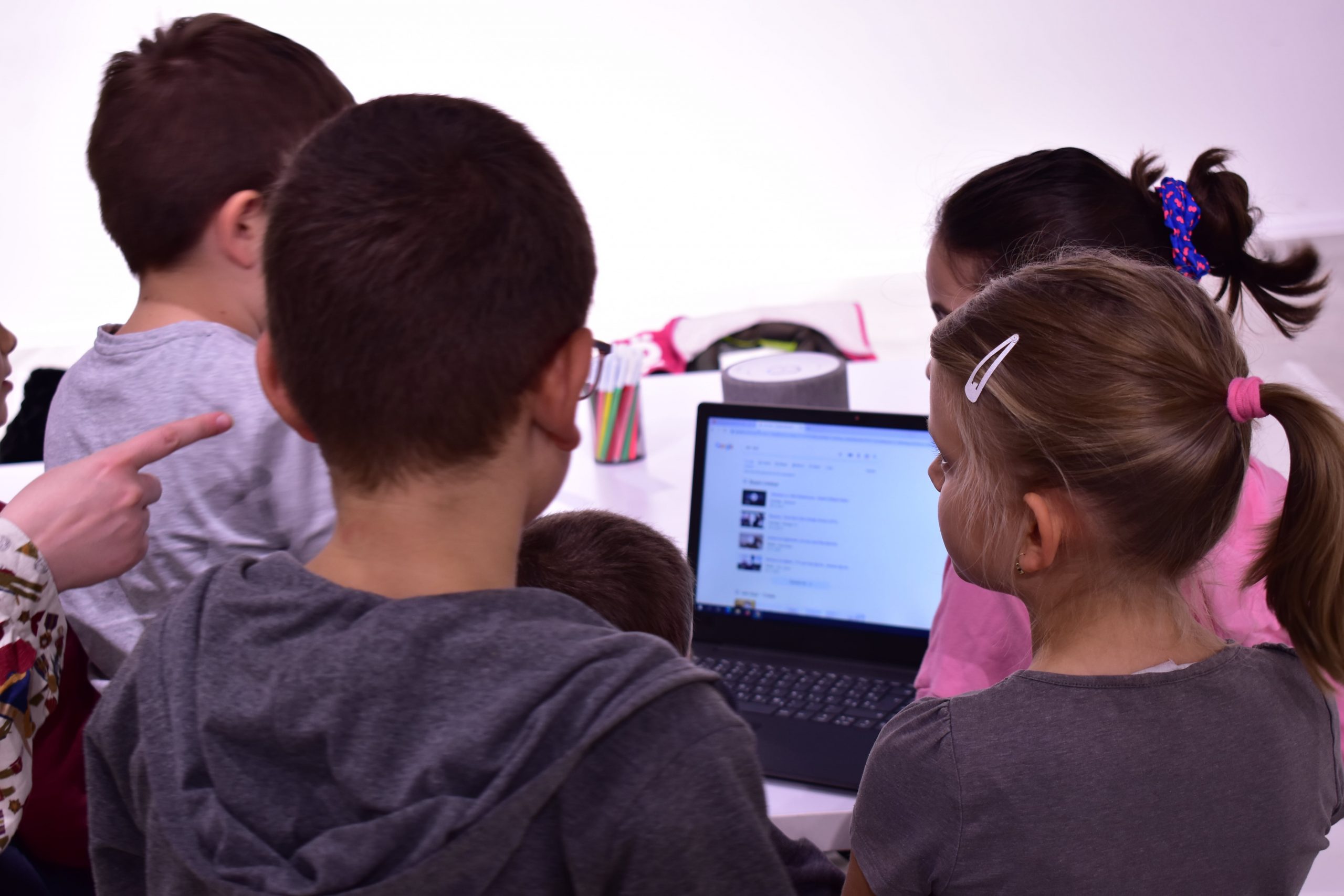
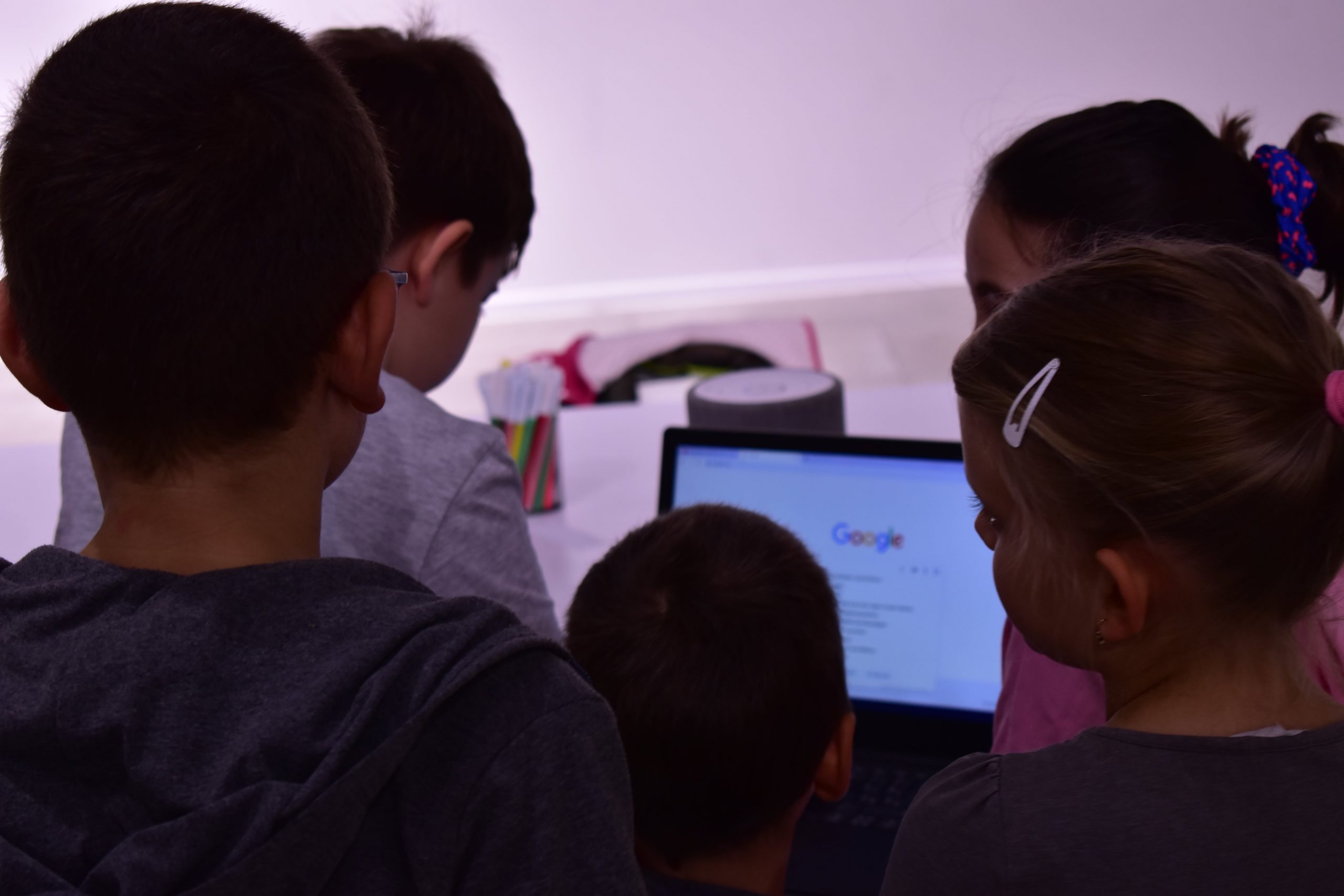

Dragi roditelji,
Danas smo išli u Brazil! Klinci su jako brzo shvatili da je pesma koju slušamo na portugalskom jeziku i počeli su već da prepoznaju sličnosti između romanskih jezika.
Iako i dalje dosta koristimo srpski, danas smo dosta reči pononovili na engleskom i vežbali izgovor težih mešanih zvukova npr (ch – kao slovo č ali mekano i duvamo vazduh kroz zube dok ga pravimo.) Kako se formiraju pojedinačni zvukovi mnogo utiče na krajnji akcenat i izgovor, pa ih pitajte da Vam pokažu CH.
Naučili smo svašta o hrani, karnevalima, životinjama, saznali gde je reka Amazon, šta je glavni grad, itd.
Pravili smo otrovne žabe koje skaču, i to Vam mogu pokazati kući. Svi su bili baš zainteresovani i jedva čekali da naprave svoju žabu, na kraju smo im dali imena i onda svi u isto vreme skakali sa žabama.
Prostor za dalji rad/poboljšavanje veština koje nam nisu jača strana:
Danas smo imali poteškoća sa svom decom jer je aktivnost zahtevala sitnu motoriku (malecke pokrete svih prstiju da se provuče vunica kroz kratku cevčicu i vezivanje čvora i lepljenje cevčice trakom, itd.) Seckanje nam je takođe veliki problem i jedna stvar je trajala 30 minuta, tako da ako ikako možete dajte im zadatak da seckaju nešto. Pošto sam morala na svakoj žabi da pomognem smorili su se čekajući (njihove reči) ali moralo je tako.
Pozitivna strana je to što je svako od dece uspeo makar jedno sam – da iseče, provuče, i zaveže čvor pa su pomagali drugima i imali smo bolju saradnju nego inače.
Poslednje, imali smo dve situacije gde je neko rekao da je nošnja sa karnevala ”užasna” a drugo dete da su ”opsednuti” karnevalima, pa smo iskoristili te situacije da pričamo o tome kako treba da se odnosimo prema tuđoj kulturi (čak i kada nam se ne dopada) da bi svi poštovali našu tako da je to bio jako pozitivan momenat za razmišljanje.
P.S. Posebna pohvala za Marka jer mu je cela ruka bila naduvena i teško se kretao ali uspeo je da boji tako, čak je i prelistao celu knjigu i pitao mnogo pitanja o Womple-u iako ne zna da čita gledao je ilustracije. :)
Vidimo se naredne nedelje!
Teacher Alice
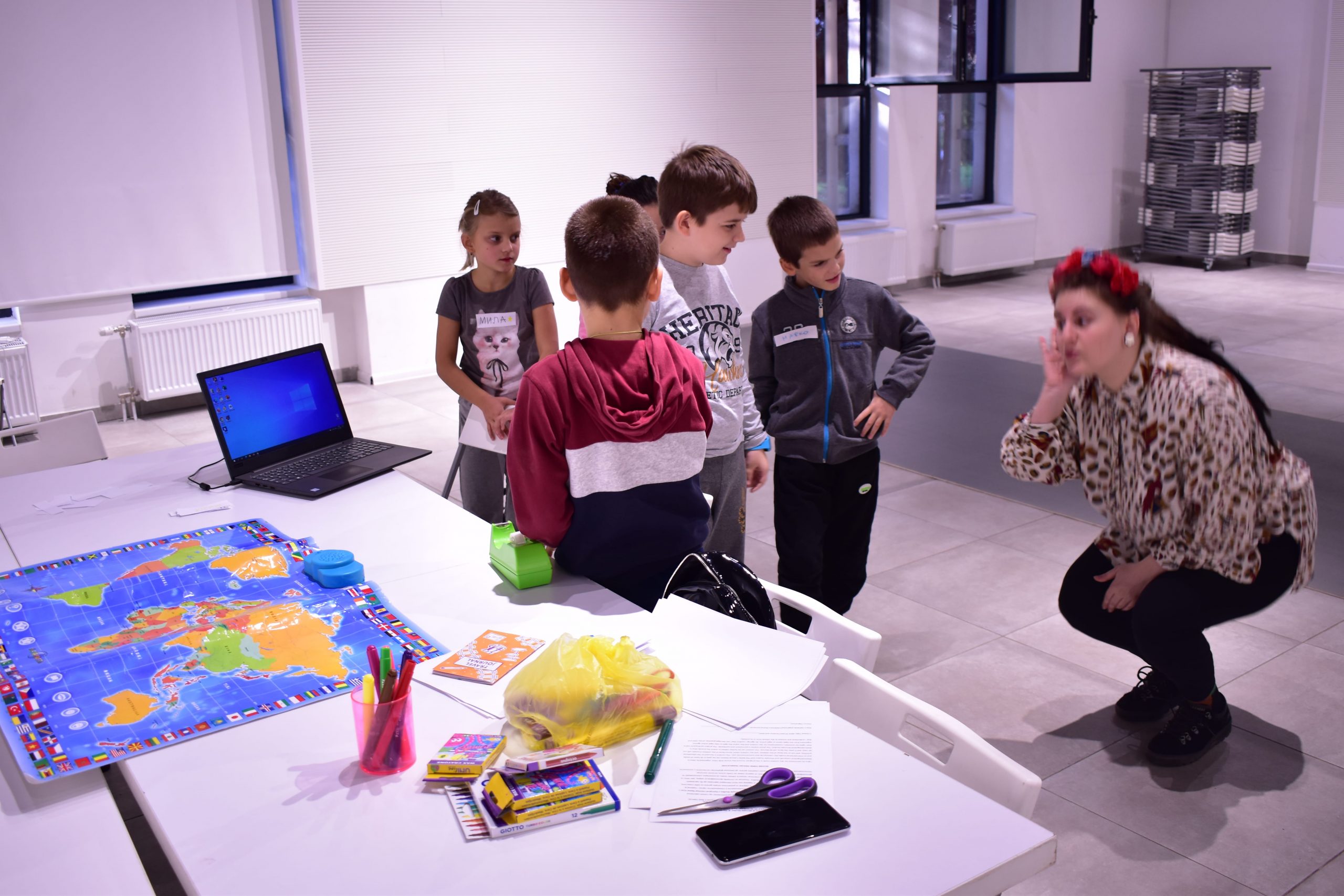
To conclude
This Womple box was special to the children; they moved with the frogs throughout the open space. We also saw real videos of the Brazilian carnival, saw many indigenous animals, and had a major learning moment when it came to expressing our opinion. I loved everything in the box because these activities were a bit above the children’s level, which made them collaborate to help each other. Finally, I also want to praise Womple because the boxes are so carefully curated and there wasn’t a single moment where the children didn’t like any part of the box.
If you are interested in getting your WompleBox and want to use it at home, you can click here or the image below to get 30% off your first box by entering our special code FIRSTMONTH30! We want to thank Womple once more for this gift because the children have been more excited than in any program we’ve done so far!
Check out our previous Womple workshop summaries
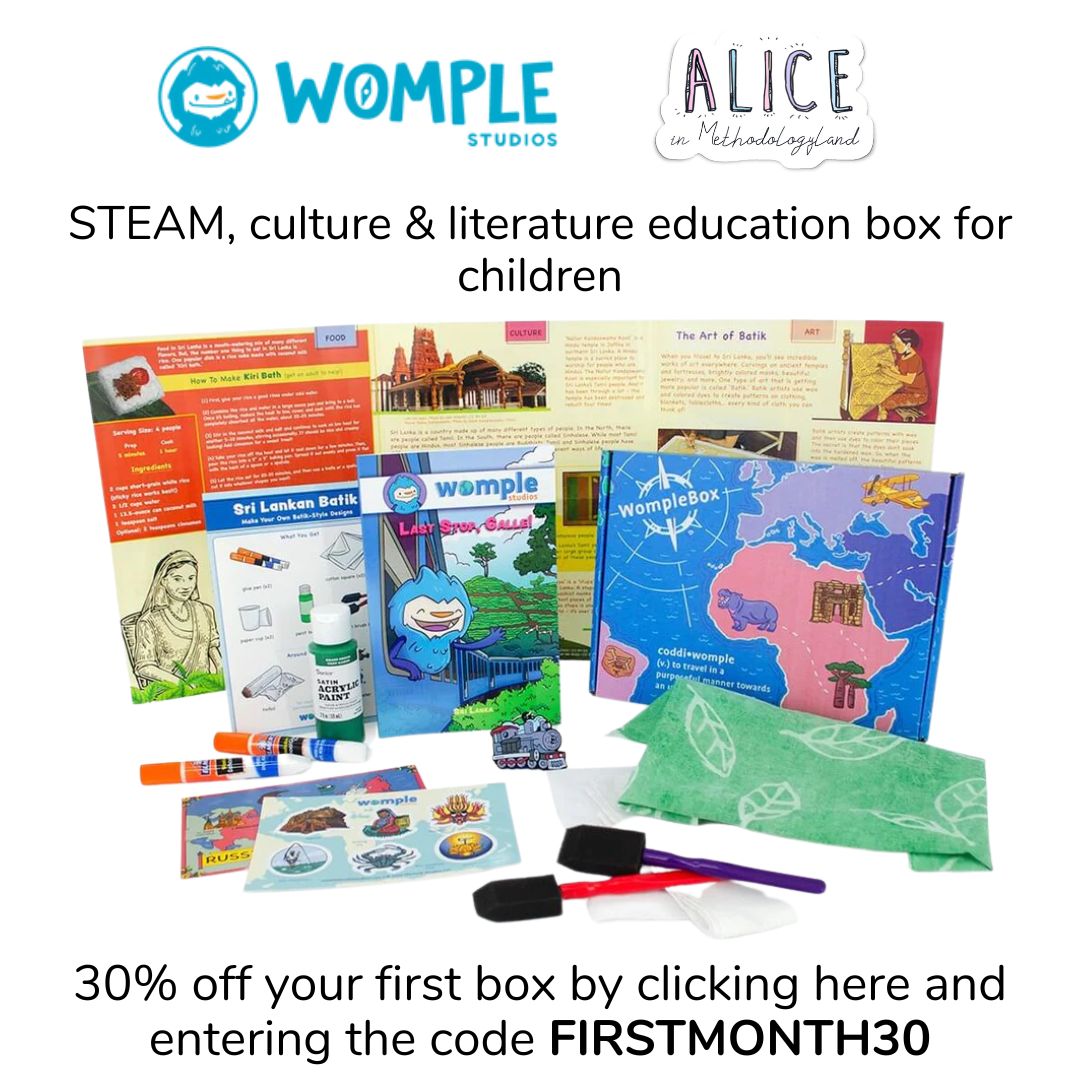
What do you think about our fourth workshop? Do you think world travel and practical activities can help your child improve their English skills? Let us know in the comments or on our Instagram page!
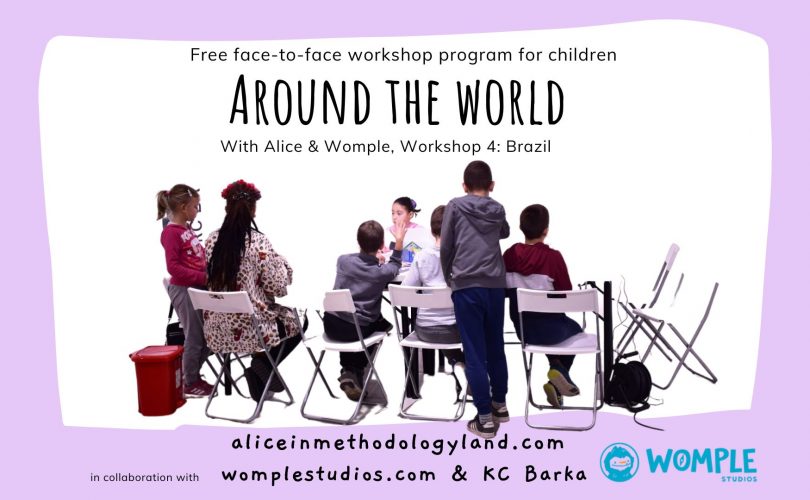
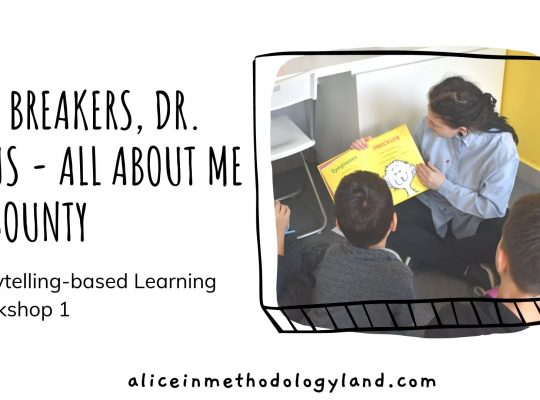



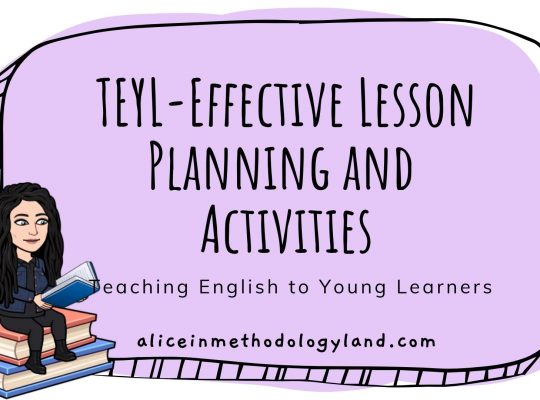
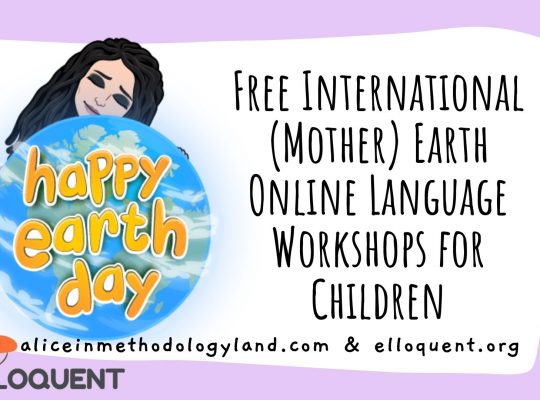
[…] Around the World with Alice & Womple: Workshop reflection 4 – Brazil […]